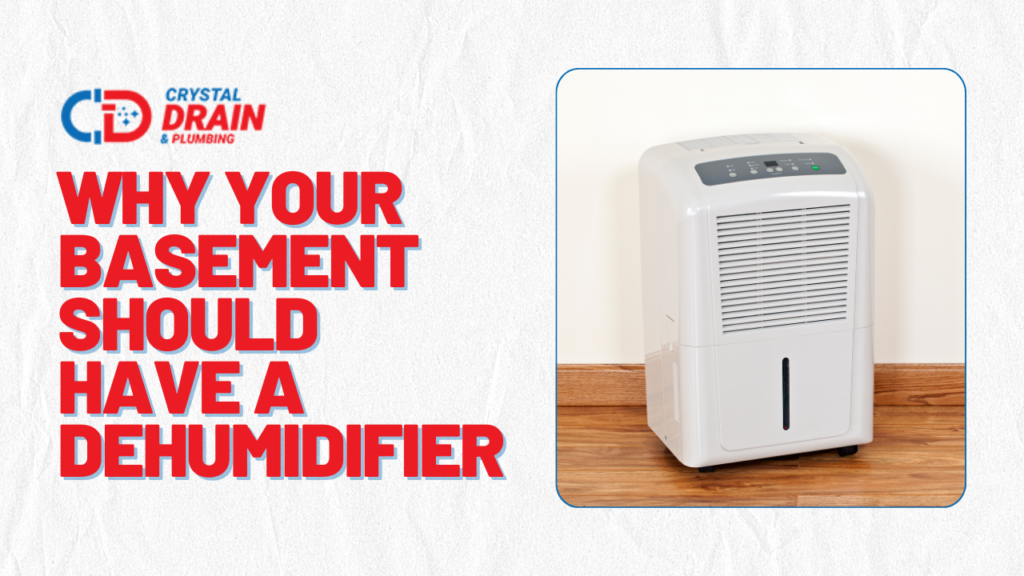- Last updated: January 15, 2025
Why Your Basement Should Have a Dehumidifier

As the seasons change, especially when transitioning from winter to spring, your basement might become a victim of excess moisture. With melting snow and increased humidity levels, your basement is particularly vulnerable to these issues. While plumbers use various materials, such as perforated pipes and sump pumps, to control moisture, adding a dehumidifier could be the perfect solution. Here’s why you should consider it, along with two effective ways to dehumidify your basement.
Key Takeaways
- Prevents Mold Growth: Dehumidifiers reduce moisture, preventing the growth of mold and mildew.
- Improves Air Quality: By removing excess moisture, dehumidifiers improve the air quality in your basement.
- Protects Structural Integrity: Excess moisture can weaken the structure of your home; dehumidifiers help prevent this.
- Health Benefits: Dehumidifiers reduce the risk of respiratory illnesses caused by mold and bacteria.
- Energy Efficiency: Venting dehumidifiers consume less energy, making them an eco-friendly choice.

Why Are Dehumidifiers Important?
During the winter months, the snow and rain can cause moisture to build up in your basement. Without proper ventilation or a moisture-control solution, this can lead to various issues. Plumbers typically use materials like perforated pipes to direct moisture away, but sometimes, these measures aren’t enough. That’s where a dehumidifier comes in.
Dehumidifiers work by reducing the moisture levels in the air, which can significantly help maintain a healthy and dry environment in your basement. This is especially crucial in spaces that are typically tight and difficult to ventilate, such as basements.

How Can a Dehumidifier Affect Your Health?
By controlling moisture in your basement, a dehumidifier creates a healthier living space. It eliminates musty smells, curtails the growth of harmful bacteria and mold, and reduces the risk of respiratory illnesses. Prolonged exposure to excess moisture can contribute to health issues like allergies, asthma, and other respiratory conditions. A dehumidifier can help mitigate these risks, making your home a safer place for you and your family.
2 Effective Ways to Dehumidify Your Basement
When it comes to dehumidifying your basement, there are two primary systems that can make a real difference. While both methods are efficient, each has its unique benefits and works in different spaces.
Condenser Dehumidifiers
A condenser dehumidifier operates by collecting moisture from the air and condensing it into water. These systems are perfect for spaces with high humidity and are capable of handling basement areas ranging from 500 to 2,500 square feet. While they can be a bit pricey upfront, condenser dehumidifiers are highly effective in controlling moisture, making them a worthwhile investment in the long term.
Venting Dehumidifiers
Venting dehumidifiers work by venting the moist air outside, allowing fresh air to circulate back into the space. This type of system is energy-efficient, as it doesn’t require much power to operate. It’s perfect for large basement spaces, as venting dehumidifiers can work in areas up to 7,000 square feet. Since they rely on airflow rather than refrigeration, they’re an eco-friendly choice that reduces energy consumption.
Conclusion
Incorporating a dehumidifier into your basement can bring numerous benefits, from improved air quality to enhanced structural integrity and better overall health for your family. Whether you opt for a condenser or a venting dehumidifier, both systems are designed to tackle excess moisture effectively. While the initial investment might seem steep, the long-term savings in maintenance, health, and household preservation make it a wise decision. Don’t wait for the mold to start growing—take control of your basement’s moisture today!
FAQs
You should run your dehumidifier continuously in the humid months, or at least when humidity levels are above 50%.
Signs include a musty smell, visible mold, condensation on walls, or dampness.
The size depends on the square footage and moisture levels. Condenser dehumidifiers are suitable for 500-2,500 square feet, while venting dehumidifiers can cover up to 7,000 square feet.
While they have an upfront cost, dehumidifiers are energy efficient, especially venting models, and can save money by preventing costly repairs due to moisture damage.
Dehumidifiers prevent mold growth but won’t remove existing mold. You may need professional cleaning for severe mold issues.
